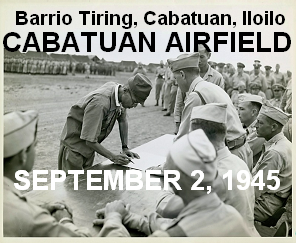
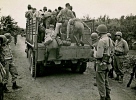
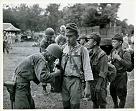
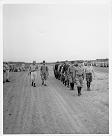
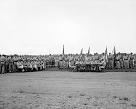
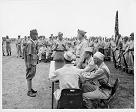
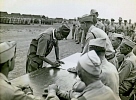
Col. Ryoichi Tozuka signs the surrender instrument
as Col. Raymond G. Stanton looks on.
Cabatuan Airfield
Barrio Tiring, Cabatuan, Iloilo
Panay Island, Philippines, September 2, 1945
|
|
- o -
|
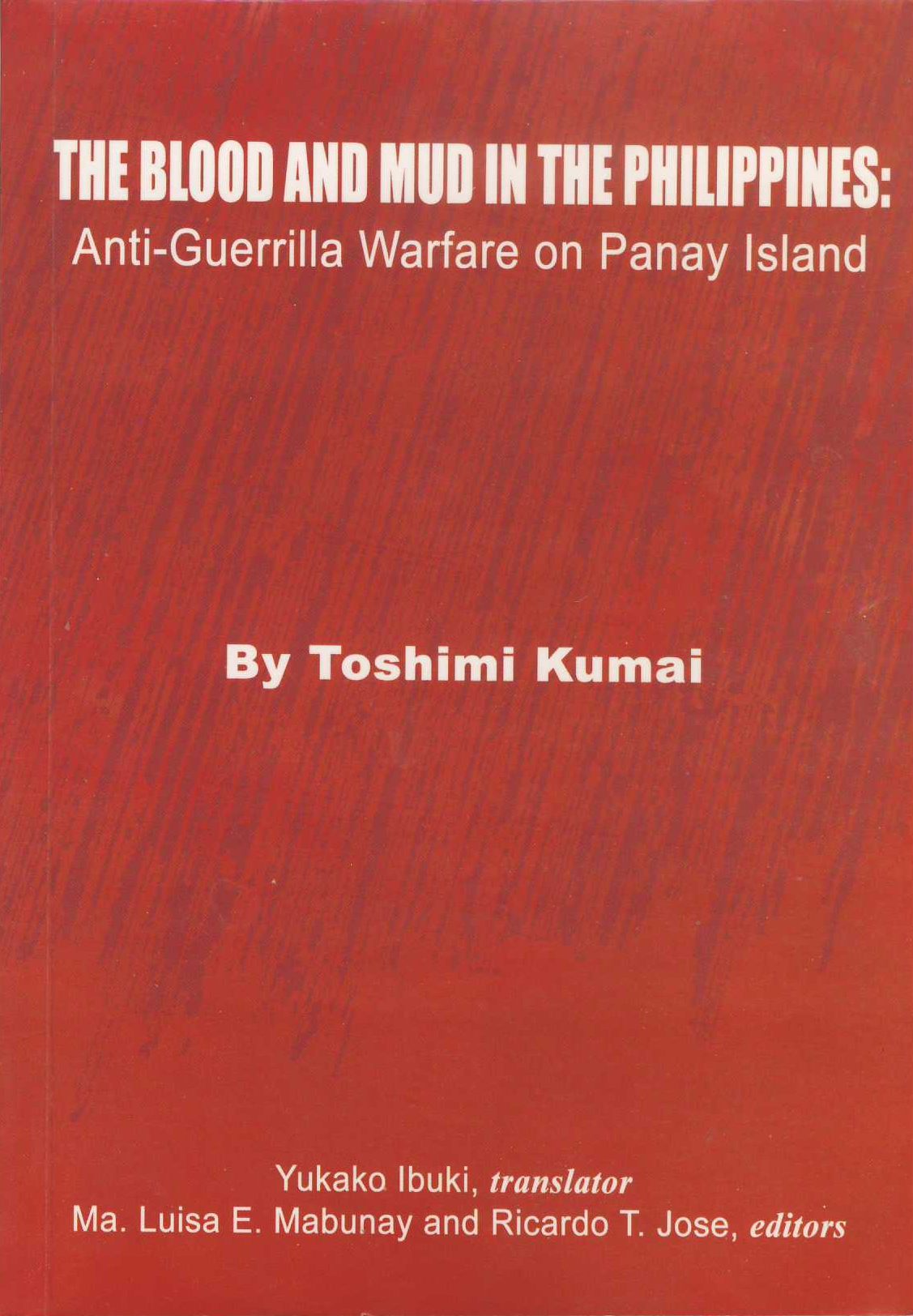
The Blood and Mud in the Philippines
Anti-Guerrilla Warfare on Panay Island
by Toshimi Kumai
Yukako Ibuki, translator
Ma. Luisa E. Mabunay and Ricardo T. Jose, editors
|
|
10.2 Entering Prisoner of War Camp
August 31, 1945 was the last day for the headquarters members’ stay in Bocari. We cooked the best foods of the mountain and ate to our hearts’ content. It had been more than five months in the Bocari position. The mountains that protected us seemed very familiar to us and we knew that we would miss them. To remember the mountains that we would not come back to again, we asked a soldier who used to be an art teacher of junior high school, and another one who liked painting, to draw the mountains. Colonel Tozuka got one of the pictures, and I received the other.
We had several Filipinos who served as spies, mercenaries, and servant boys, but I had told the US forces that there were no Filipinos with us. For this reason, I told the Filipinos with us that we were going to surrender by the order of the Emperor. Giving each one of them a carbine and plenty of food, we allowed them to go wherever they wanted. In the morning of September 1, Colonel Tozuka and all others attached to the headquarters descended along the path we took as emissaries and looked back at the mountains of Bocari, but we heard no gunshots this time.
The US forces did what they had promised. The observer plane flew low as it came to meet us. Eventually we arrived at Daja, east of Maasin, where we arrived as military envoys. At the entrance of the open space, around 20 moving cameras started to run at once while a line of newspaper cameras and those of US officers clicked away simultaneously. This unexpected and abnormal scene embarrassed Colonel Tozuka and the soldiers of the headquarters.
Two companies of American troops guarded the open space surrounded by the jungle and a few Filipino officers were also there. At the long center table sat the officers such as Lieutenant Colonels and Majors, with Colonel Stanton at the center. Behind them, around 30 guards were standing. Following the instructions of an American officer, the unit commander, Colonel Tozuka, was the first to walk through two rows of American soldiers and handed over his sword and pistol. Colonel Stanton received them with a solemn expression on his face. Following him, Captain Koike, and the six of us officers attached to the headquarters, handed over our swords. Colonel Stanton ceremoniously received them as if performing in a play. It was the ritual of surrender. Without weapons and having nothing to do, the unit commander was the figure of a defeated officer. (I later came to know that Colonel Tozuka’s sword was handed down to Major Ramon C. Gelvezon, executive officer of the 63rd Regiment.) NCOs and soldiers also handed over their weapons and bullets to the American soldiers who stood in rows. A thorough body-check along with belongings was also carried out.
After the ceremony, we went out onto the asphalt road via Maasin under the strict guard of US soldiers: the officers in jeeps and the soldiers in trucks. As we came into populated areas, people crowding along the road shouted loudly, ‘Bakayaro’, ‘Dorobo!’ The commotion built up and endangered us since some residents started to throw stones at our vehicles. The vehicles pushed their way through the crowd with the US escorts shouting and firing warning shots into the air.
The vehicles stopped at the former Japanese Army airfield in Cabatuan. Tents were built in the 200 square-meter POW camp surrounded by a barbed-wire fence. US soldiers were on duty in the watchtowers. As we watched, local residents congregated around the fence, shouting like mad and throwing stones. They pushed forward until it seemed that the fence would break; American soldiers shot into the air to threaten them off. The crowd would briefly withdraw but soon gathered again. Such uproar lasted until the evening. Because of the stone throwing, we could not get near the edge of the camp.
Contrary to the harshness surrounding us, the four or five US officers who were in charge of us were very kind. They readily and smilingly helped us set up tents or dig ditches around them. They even offered us a helmet full of candies in the evening.
September 2nd was the day of surrender for the other Japanese soldiers. From early morning, the local people surrounded the camp, shouting loudly and throwing stones. By mid-morning, there was a continuous flow of arrivals of former Japanese soldiers as POWs. Tents for twenty were set up one after another all around the site.
The next day, a little after noon, all officers were assembled to attend the surrender ceremony. As we made our way to the setting of the ritual, we saw US soldiers feverishly checking out the belongings of Japanese soldiers who descended from trucks. Every one of them had gotten rid of weapons and they were running around in confusion amidst the shouting of US soldiers. The elite troops of Panay already looked quite like POWs.
The venue for the surrender ceremony was a corner of the airfield beside the camp, where hundreds of military vehicles were parked. A battalion of US troops and a company of intrepid-looking Filipino Army personnel were standing in rows. I carefully observed the behavior of the Filipino soldiers against whom we had fought. In following orders, no movement of theirs looked inferior to that of the American soldiers, making me think of the hard training they must have received.
At the center was a stage where Colonel Stanton stood. Representing the Japanese Army, the Tozuka unit commander loudly read out the statement of surrender of the Japanese Army to the US Forces. As expected from the look of the setting, the ceremony ended rather simply.
As we returned to the camp, more and more Japanese POWs as well a Hôjin women and children arrived. The treatment of high-ranking office was different from that of the rest of the POWs. The officers were put in small tents for two while NCOs and ordinary soldiers were in large tents for twenty. Thus, we observed for the first time how the Geneva Convention was supposed to be carried out.
|
|